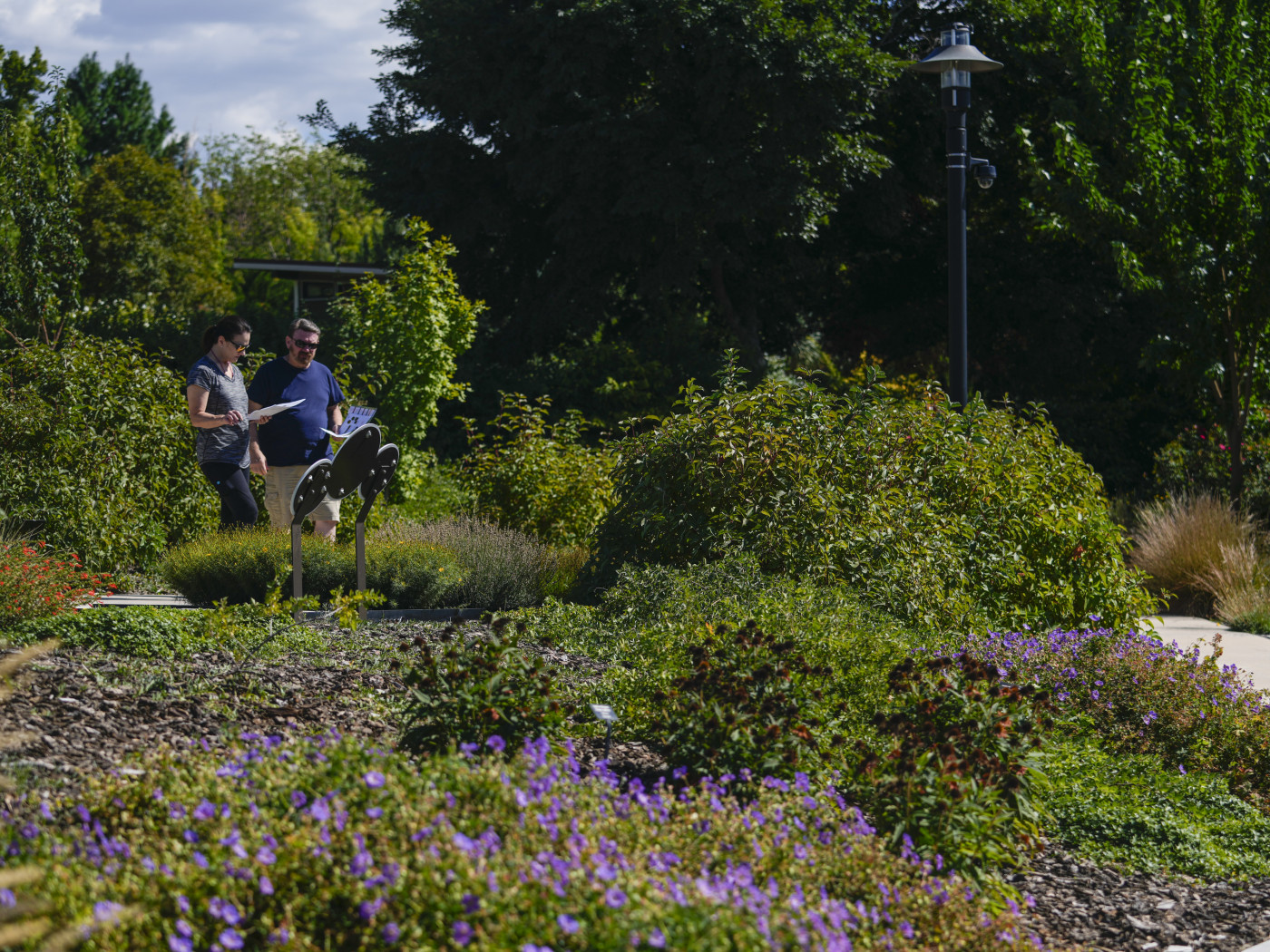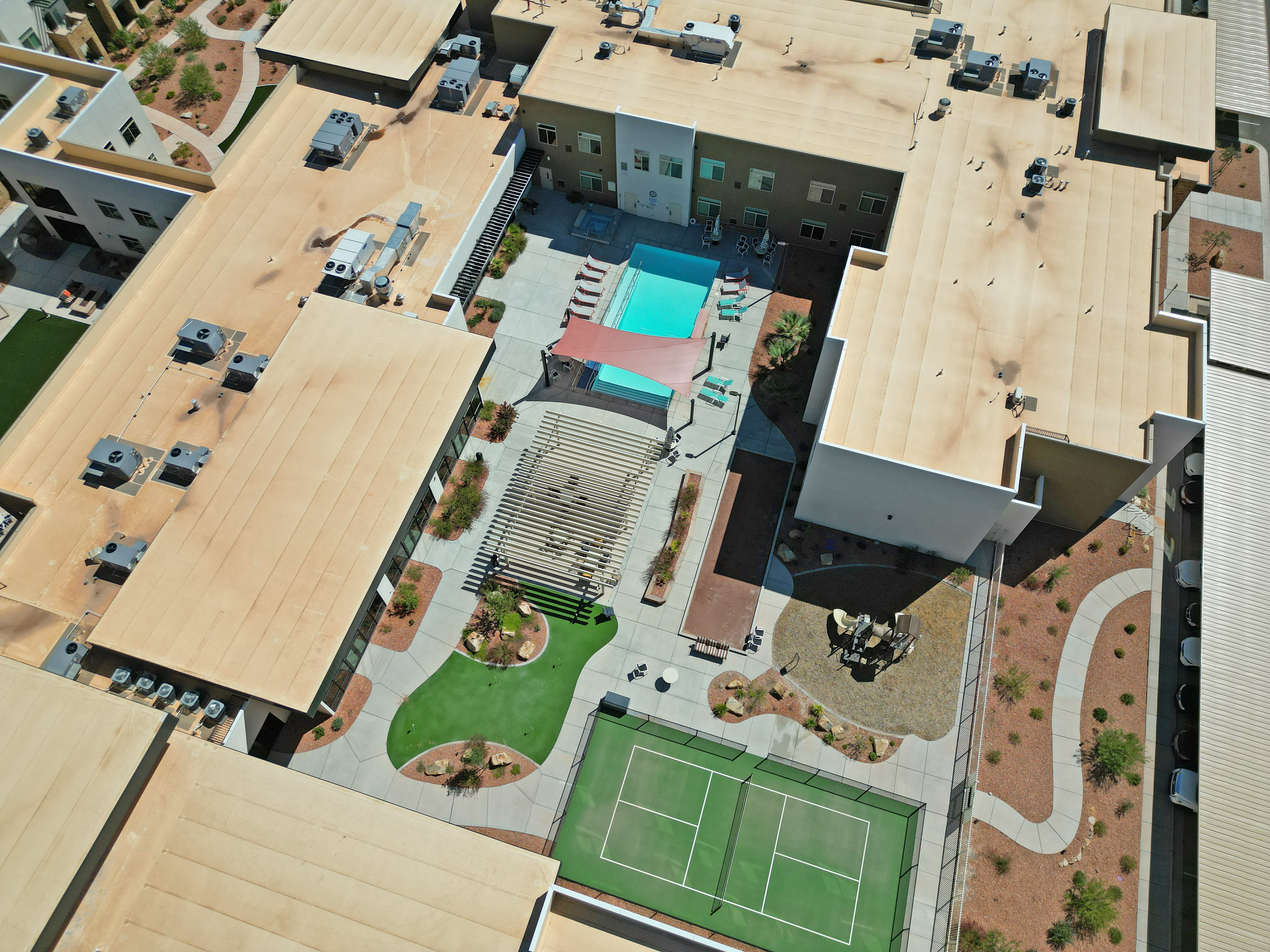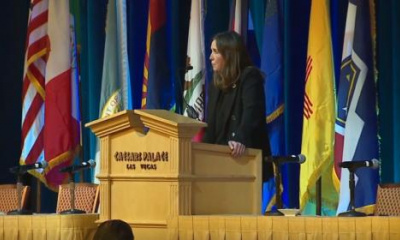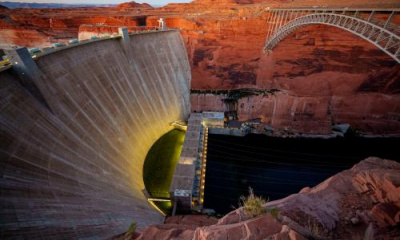So you’re thinking about ripping out your lawn — and getting paid a government rebate to do it.
Some advice:
- There are plenty of funds available — if you live in a qualifying city.
- Know that you will spend more than you’ll get from the rebate — though water districts are looking into financing options.
- But hold off on ripping out your lawn. You need to show proof that your lawn is alive and well before you kill it.
This summer marks the second year that the Landscape Incentive Program has been in place. That’s the state program in which property owners can earn up to $3 per square foot (the amount depends on your water district) for ripping out water-thirsty grass and overhead sprinklers and replacing them with perennials and shrubs watered by drip irrigation.
Utah lawmakers set aside $10.2 million in one-time funds and $3 million ongoing in the last two fiscal years — an amount doubled by participating water districts. And there’s plenty of that money left. The state has paid participating water districts $1.3 million so far.
Water districts have been giving out rebates longer than the state has. Data provided to the Great Salt Lake Collaborative by water districts shows they have delivered $6.3 million from 2023 through May 2024. Some of that money comes only from the water districts. No matter who paid Utahns rebates, they collectively removed 4.5 million square feet of grass in the past year and a half, the equivalent of almost 79 football fields.
To understand how the program is working, the Collaborative sought rebate amounts and project sizes of each property owner that received a rebate and interviewed water district officials about the program. We also solicited stories about lawns from readers of the Great Salt Lake Collaborative newsletter, Lake Effect. Sign up for the free, weekly newsletter here.
This drone footage shows an entire community built with water-wise landscaping. The parking strips feature water-wise plants, and grass is limited in the front yards. Jake Young, a landscape architect and city planner who is not associated with the project, says it is a great example of what single-family home neighborhoods can look like when planners consider water. The housing community is called Granite Legacy and was built by Garbett Homes on the former site of Granite High School in South Salt Lake. Photo courtesy Jake Young.
Who can participate?
You have to live in a city or county that has passed ordinances limiting grass in new construction. Without that policy change, water districts will be paying to remove grass while cities are allowing new development to put in, well, more grass. “You're really just chasing your own tail if you don't interact with new development and ensure that new development is as efficient as it can be,” says Doug Bennett, Conservation Manager for the Washington County Water Conservancy District.
There are many cities that don’t qualify for the state subsidized rebate because they haven’t passed such a conservation ordinance. However, some locations offer rebates that aren’t part of the state program.
Utah’s Division of Water Resources says 58% of Utahns live in an eligible location for the state subsidized Landscape Incentive Program.
Here’s a website that shows what cities qualify.
And here's where you can apply.
Do you live in a city that doesn't qualify? Are you working to get water-wise ordinances passed? Do you represent a city and don't want to pass such an ordinance? We want to hear from you for a future story. This email address is being protected from spambots. You need JavaScript enabled to view it. and include where you live.
What do I have to do?
First, you need preauthorization from your water district. You have to show proof during a site visit that you have a well-maintained, living lawn. Some water districts also require you to take a free landscaping class. Depending on the water district, you have to remove a minimum of 200-300 square feet of turf.
You must plant perennials and shrubs, cover the project with mulch and replace the overhead sprinkler system with drip irrigation. Different water districts have different requirements on how dense the new plants must be.
This website explains each water district’s requirements.
What’s the cost and rebate amount?
The projects that use state funds can earn up to $50,000 in rebates a year per project — an amount more typical for commercial scale conversions.
According to data provided to the Collaborative, the average resident who participated in rebate programs removed 1,200 square feet of grass and received $2,100. But there was also a wide range. It wasn't uncommon for water districts to pay residents over $10,000. Some residents got less than $100. The largest amounts paid to residents was nearly $50,000 each in Kaysville and West Haven by Weber Basin Water Conservancy District.
You will very likely spend more than you’ll get from the rebate.
“We find that the incentive covers about a third of the cost if it's done by a contractor,” says Amanda Strack, water conservation manager for Central Utah Water Conservancy District, which provides water in Salt Lake, Utah, Juab, Wasatch, Duchesne and Uintah counties,. “If they’re doing it themselves and they've used more cost-friendly materials, then they can get pretty close to at least covering half of the project.”
And that cost is a deterrent:
“I love my lawn and yard but also realized that I need to reconsider,” Anne Hoffman wrote to Lake Effect. “My dilemma is the cost of transitioning away from this old school lifestyle. And how to do it.”
Jason Brown wrote to Lake Effect that he has unused portions of lawn that could be removed. He and his wife have added native perennials and pollinator-friendly flowers. And he supports using less water. But the cost and time it would take to redo their sprinkler system to create water-wise zones with drip irrigation makes the rebate program impractical.
“Rebate programs have deadlines. We’ve only got so many summers with kids who want to run and play around the backyard — and we worry about taking up a whole summer to do a 'localscape' conversion. To make the full landscape conversion we want, we’re either going to have to have a dramatic influx of cash — if not from a job or estranged uncle, maybe from a more generous state program — or we’ll have to wait until a time when we and our kids are [done] loving the lawn the way we do.”
Washington County Conservancy District says a typical project costs $8,000 — and that kind of price tag limits the program to those who have that much upfront in discretionary spending. Bennett says he’s exploring with bankers how to create a home equity product to enable loans for lawn conversions. “My program is only appealing to people who have $8,000 of discretionary money,” says Bennett. “That’s a problem not only in Utah, but that's a problem throughout the west. In a way we've shrunk our audience.”
This photo Legacy Village in St. George, Utah, shows zero land dedicated to real grass. It includes some small selected synthetic grass in the courtyards. It was designed by landscape architect Jake Young, who believes in putting grass where people will use it. Photo courtesy Jake Young.
Why can’t I replace grass with concrete or rocks?
All the conservation managers say the new landscape required through the rebate program needs to be attractive. Lawn can’t be replaced by concrete or gravel.
“I think a lot of people get the vision of a Phoenix or Las Vegas and there's nothing necessarily wrong with that, but that's not, I think, what Salt Lake County residents want their neighborhoods to look like,” says Kelly Good, community engagement department manager at Jordan Valley Conservancy District, which mainly serves Salt Lake County. “So we encourage people to have 50 percent plant coverage.”
Water districts require a certain amount of mulch, too. “We don't want these just to be barren dirt piles and just become weeds,” says Jonathan Parry, Assistant General Manager of the Weber Basin Water Conservancy District. “We expect mulch to be placed down in 3 to 4 inches to keep that weed growth and that, that's moisture barrier in there.”
Done right, the new landscaping can inspire others to rip out their lawns and prevent property owners from reverting back to grass.
“We teach classes, and all the districts do, on how to do these things. And we have a demonstration garden, as most of the districts do, so people can see some of these plants and know what they're choosing, what their strengths and weaknesses are. All of that is important because we want these to be attractive functional landscapes that people can be proud of,” says Bennett.
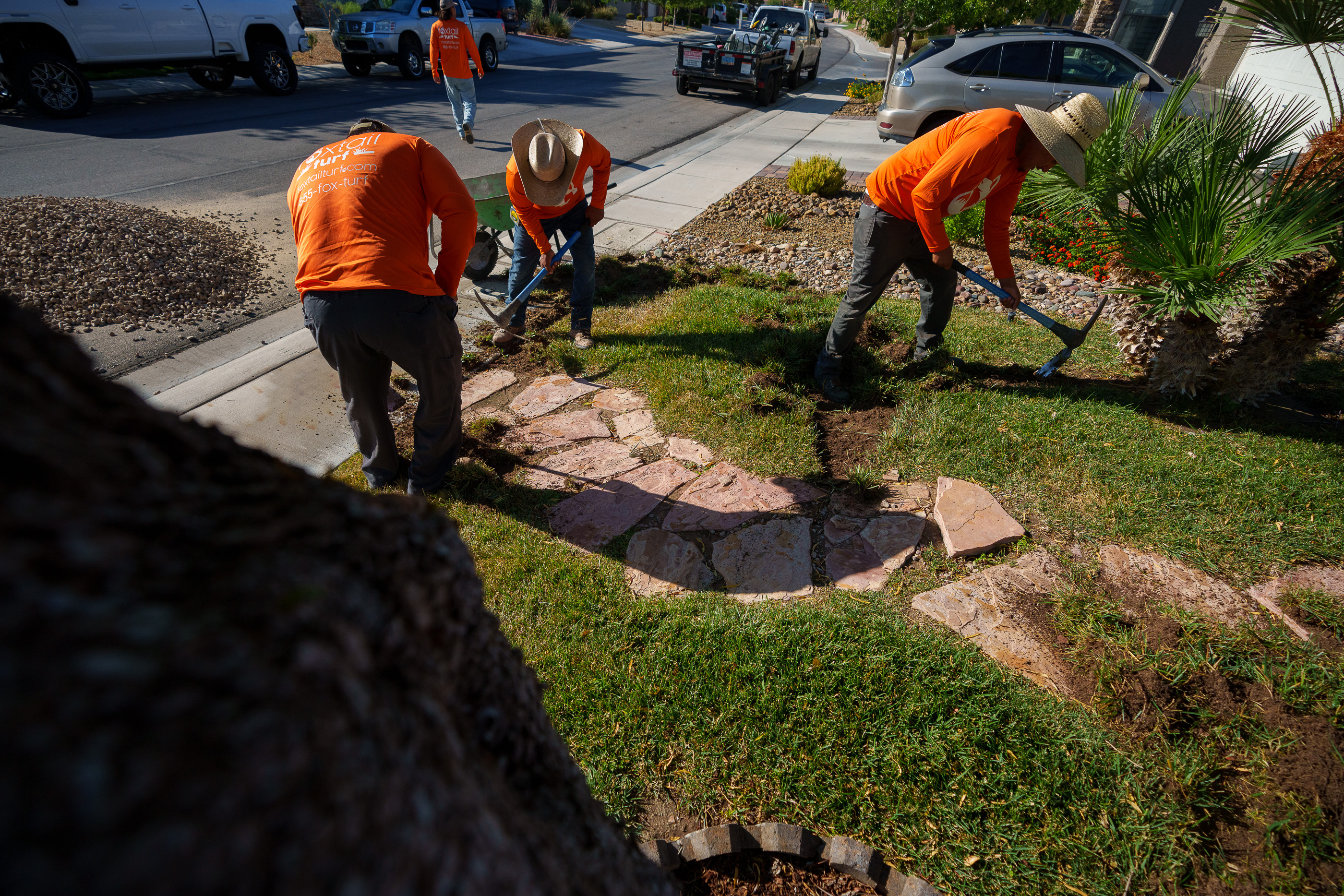
(Trent Nelson | The Salt Lake Tribune) Workers with Foxtail Turf remove the grass from Patricia Council's North Las Vegas yard, replacing it with artificial turf on Thursday, Sept. 29, 2022.
What about artificial turf?
The state didn’t allow its money to fund replacing green grass with artificial turf, but some water districts did allow it through their own programs. But this year, Jordan Valley, Central Utah and Weber Basin stopped, citing artificial turf’s chemical and microplastic pollution contamination of groundwater and surface water runoff and its contribution to urban heat island effect.
Are there other outdoor incentive programs?
Some water districts offer Treebate: up to $100/tree, up to five trees a year, that are watered by drip irrigation.
Switch to Drip pays a rebate to remove overhead sprays for drip irrigation in planting beds.
Why do this?
It’s estimated that 70% of Utahns’ household water is used outside. In a state facing a megadrought, a shrinking Great Salt Lake and Colorado River, and major growth, reducing water on grass is seen as one way to preserve a dwindling water supply.
For the people who have ripped out their lawns, the reasons vary:
“With the help of the Utah Water Savers program, I finally tore it all out last fall and put in new native and water wise trees and plants, plus a lovely patio. The pollinators, birds, and other creatures will love it, and I will enjoy the blooms, added shade and privacy, not to mention a much lower water bill," Jen wrote to Lake Effect. “The pollinators, birds, and other creatures will love it, and I will enjoy the blooms, added shade and privacy, not to mention a much lower water bill.
Wrote Richard Spotts, of St. George: “I don’t have to think or worry about my lawn anymore. I converted it to xeriscape with native trees, plants, and rocks. No more mowing, fertilizing, and wasting water. Now I have endless enjoyment watching pollinators, birds, and lizards.”
Other landscape converters say they enjoy the reduced noise and fumes from no more mowing.
The state’s goal is to replace 1 million square feet of grass a year, according to the state Division of Water Resources.
All of the participating water districts do it to help ensure they have adequate water supply for their communities now and in the future, say their conservation managers. Spending money on conservation is cheaper than developing new water supplies. Plus, they have water conservation goals either required by the state, by multi-state compacts or in order to meet projected future demand.
The Weber Basin Water Conservancy District serves about 700,000 individuals in Weber, Davis, Morgan and Summit counties and sells secondary water to customers along the Wasatch Front from North Salt Lake to West Haven. It estimates that property owners use 40+ inches of water a year on their grass — an amount that could be cut to 17 inches for waterwise perennials on a drip system.
The Northern Utah water district needs to cut water use from 250 gallons per person per day down to 175 gallons per person per day by 2065 to meet regional water conservation goals, according to Parry. (Usage was around 230 gallons per person per day in 2023.)
To get there, Parry says outdoor water use has to drop by about 50 percent, and that can happen by being more efficient in how water is used and reducing overall demands. Boosting education about how to properly irrigate and eliminating some turf are helping meet the goal. “This is a program where we see a huge opportunity to reduce demands. We'd love to see almost every one of our customers take advantage of this in one shape or another.”
Jordan Valley wants to complete 600 landscape conversion projects this year in order to work toward meeting its agreement to reduce nonfunctional turf by 30 percent — something they agreed to do in with other water districts in the Colorado River Basin. The district first has to determine how much turf it has to know how many square feet of grass it needs to eliminate.
It has promoted lawn removal programs the longest in the state, since 2015. “There’s definitely room to grow,” says Good. More property owners were interested in the programs during the droughts in 2021 and 2022, she noted. “People were driving by reservoirs and seeing just how low they were. And I think that there was a lot of drive from the public to do their part.” Two wet winters have meant interest has dropped. “The more we can do right now helps us prepare for future droughts,” she says.
All of Jordan’s water is treated culinary water — none goes to farms — and 60 percent of its water is used outdoors, says Good. So the place to save water is via landscaping. “The easiest way for… the people we service to conserve water is to get rid of their grass or to reduce the amount of grass they have because it is a really thirsty plant and we treat all this water and just put it onto our grass.”

Ivins resident Joe Hoy shows off his water-efficient front yard. His home will be one of the stops on the future Parade of Gardens Southern Utah tour scheduled for September. Hoy is also among the many residents who have benefited from the Washington County Water Conservancy District’s lawn replacement rebate program, Ivins, Utah, June 25, 2024 | Photo by Mori Kessler, St. George News
What’s nonfunctional turf anyway and how much do we have?
If you step on your grass only to mow it, it’s considered “nonfunctional.” Washington County Conservancy District has another term: Lazy. “It just lays there looking pretty and drinks all day,” says Bennett. “It demands a haircut once a week. It requires a lot of resources, but a huge amount of it is the only time anybody ever sets foot on it, they're pushing a lawn mower…. It's not providing anything productive for our community.”
To date, Washington County water district is the only one of the four large conservancy districts to study how much grass is in its borders and classify which are useful or not. Its “2023 Turf Analysis” found it has 184 million square feet of turf within developed areas, and 32 percent of it is nonfunctional because it’s in the front yard of homes, within parking lots, parking strips or surrounds commercial and industrial spaces that no one uses.
Some other water districts are investigating similar studies so they can establish a baseline and determine goals. Bennett says the study also helped the water district target individual homeowners with the largest amounts of turf grass in the county and ask them to consider reducing or eliminating lawn they don’t use.
Why do we have so much grass to rip out now?
The consensus is that grass is easy to install and maintain — whether or not it fits our climate.
“I don’t know if it's anyone's fault, but it was just kind of the standard, and the ideal landscape is your pretty green carpet of lawn,” says Good at Jordan Valley.
And when Kentucky bluegrass in parking strips and parking lots and medians was the required default, Utah’s water supplies weren’t stressed like they are now, either by drought, climate change or population growth, notes Weber Basin’s Parry.
Dwindling water is reminding Utahns that our landscape should probably look differently than back east, where Kentucky bluegrass can be grown without irrigation, he says.
“Whereas here, we get something like 26 inches of water but it's almost exclusively snowpack. The summer months come and we're lucky to get three inches of water, four inches, five depending on the season. And when turf grass requires 30 inches of water, well, five inches or six inches isn't gonna get you there. You're gonna have to draw on that supply that you got during the winter months.”
What’s the role of business owners and government?
Housing developers, car dealerships, gas stations, homeowners associations and cities have all received rebates for removing lawns. And those are the places water districts say they can see the biggest impact.
“I look at so many areas where they don't need to have any grass on their property and yet they have thousands of square feet of grass. No one ever walks on it. No one sits there, no one has picnics there,” says Strack, with Central Utah water district about commercial properties.
Central Utah has given $780,000 to commercial property owners since 2021. Ivory Homes and various Holiday Oil locations have received the most money —$243,000 and $109,000 respectively— mostly to add water-efficient landscaping at new construction projects.
Good, at Jordan Valley, says she’s working on targeting more commercial landscape companies with a water conservation message. “Getting a big commercial entity to come on board ,they’re harder to get because they're like, ‘Well, I've been doing it this way. It's easy.’ Their bottom line isn't as affected as maybe a single-family resident would be by changing their water bill.”
Jordan Valley has given nearly $1 million to commercial property owners since 2015, with the largest grant of $57,565 for a demonstration garden at Jordan Academy for Technology and Careers in Riverton. It gave rebates of $50,000 each to BTB Enterprises in Draper, Merit Medical in South Jordan, Vista Montana HOA in West Jordan and Kearns Improvement District. It also gave a rebate of $50,000 to NOVVA Data Center for a new construction project to prevent them from using turf.
Jordan also spends money on rebates for cities — $ 1 million since 2015 — to create demonstration projects in South Jordan, Taylorsville, Riverton, Bluffdale and Draper.
“There’s a lot of value in the municipalities converting their nonfunctional turf to water efficient landscape because it's the government that's telling people to tear out their lawns,” Good says. “We want to lead by example and lawn uses the same amount of water, whether it's in your front yard” or at South Jordan’s city hall.
Can churches participate?
Yes. Two have so far: Good Shepherd Presbyterian Church in St. George and the Korean Baptist Church in Layton. Both removed 2,700 square feet of grass.
What if I live in a city that doesn’t qualify?
The state suggests you lobby them to adopt the standards that limit grass in new construction. Conservation districts are working to understand and allay the concerns of those that haven’t.
Parry, with Weber Basin, understands he is asking people for a “pretty substantial change” from the status quo and that officials are grappling with what’s best for their communities. He says city officials raise concerns about enforcement of the grass restrictions or that it’s not the proper role of government to tell people what they can put in their yards.
“We’ve got all sorts of ordinances on what the height of your fence can be, how many chickens you can have in your backyard. We certainly have seismic design criteria, right?
… To me, making sure that we're utilizing our water resources as efficiently as possible falls right in line with that,” Parry says.
The Weber Basin water district recently required that cities must adopt water efficient landscape standards if they want to buy additional water from the district. But some cities have other water sources so they don’t need to get additional water from the district, he says.
“The newer communities, yes, if they were unwilling to adopt the standards and ordinances, then they probably are limiting growth because there just wouldn't be an opportunity to get more water,” Parry says. “Some of these communities, they existed prior to the [Weber Basin water] district being created, they had water resources that they make use of in groundwater sources or surface sources. …. Maybe they're looking at it and saying we don't need to go as aggressively because we … have plenty of water to still accommodate what we're trying to do.”
Bennett in Washington County said he heard the same concerns about restricting property rights and successfully countered it by arguing that it would be a bigger curb of property rights to not allow a property owner to develop because the water district ran out of water.
“These homes that we're building today are beautiful, they're stunning, they're water efficient. Really, what we're doing is trying to bring people in to realize that their quality of life is not dictated by how many thousands of gallons of water they use. Quality of life is dictated by making good choices about how to use it.”
Editor's note: This story was updated July 16, 2024, to reflect that some water districts offer up to $100 for a Treebate program.

